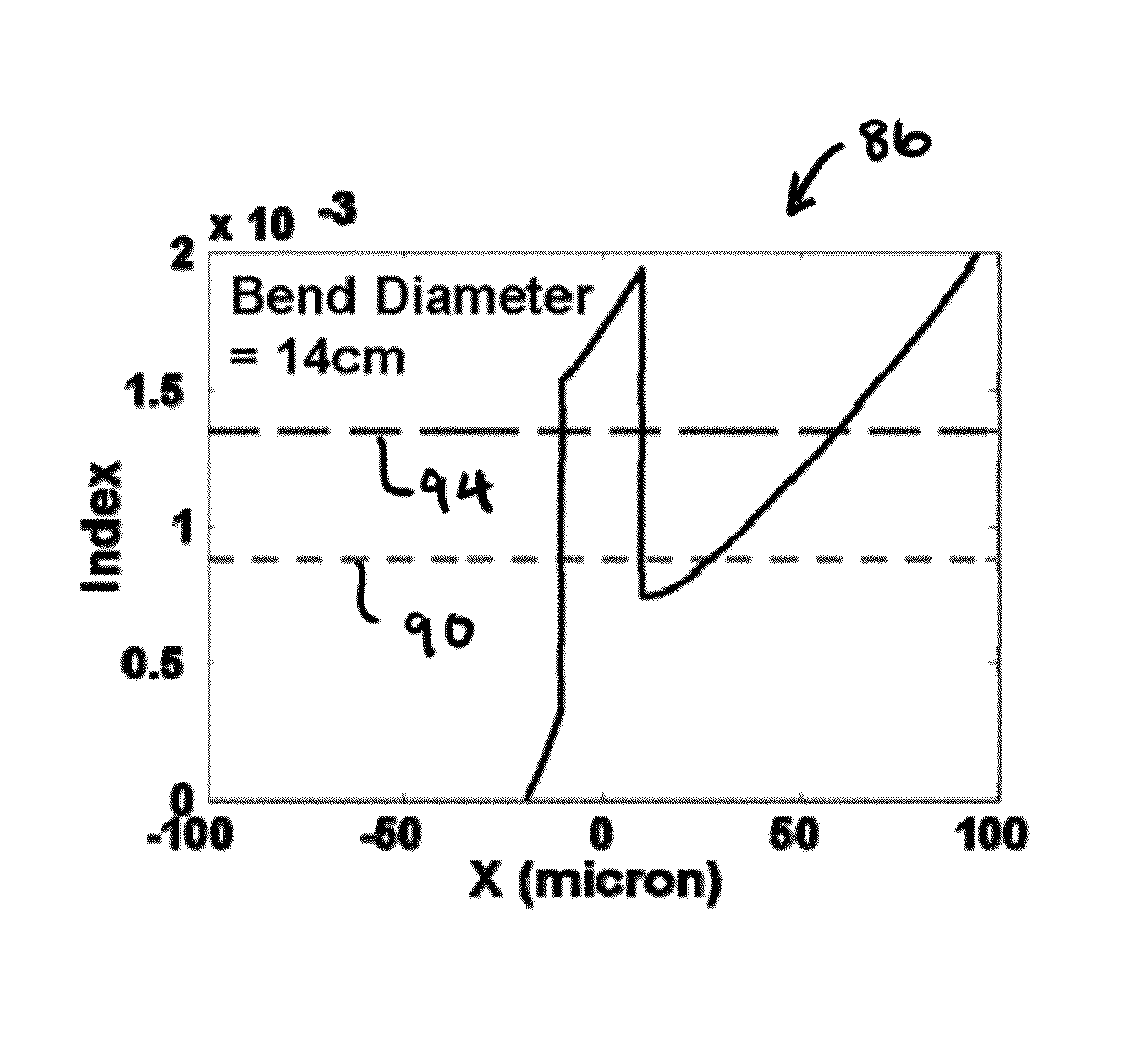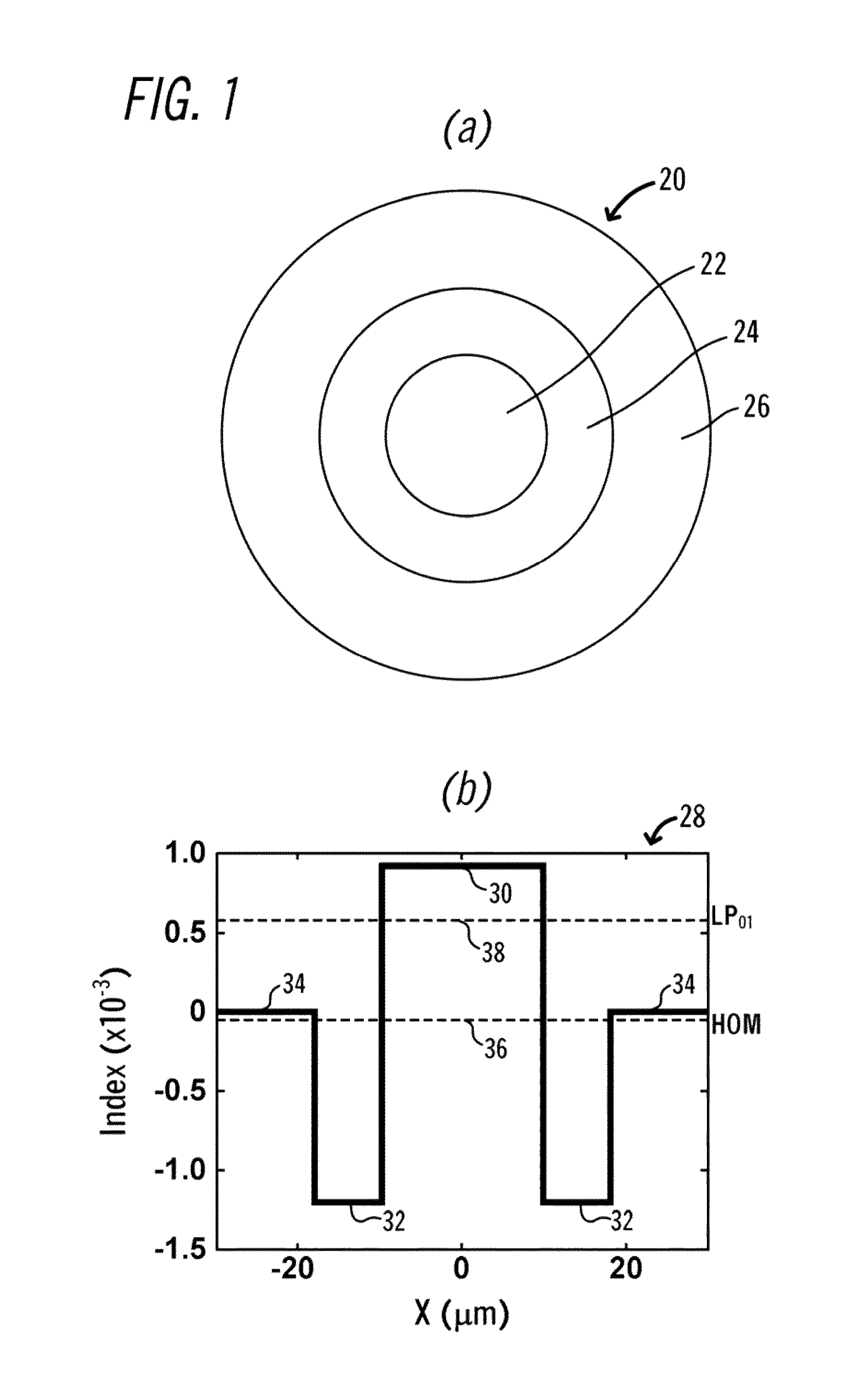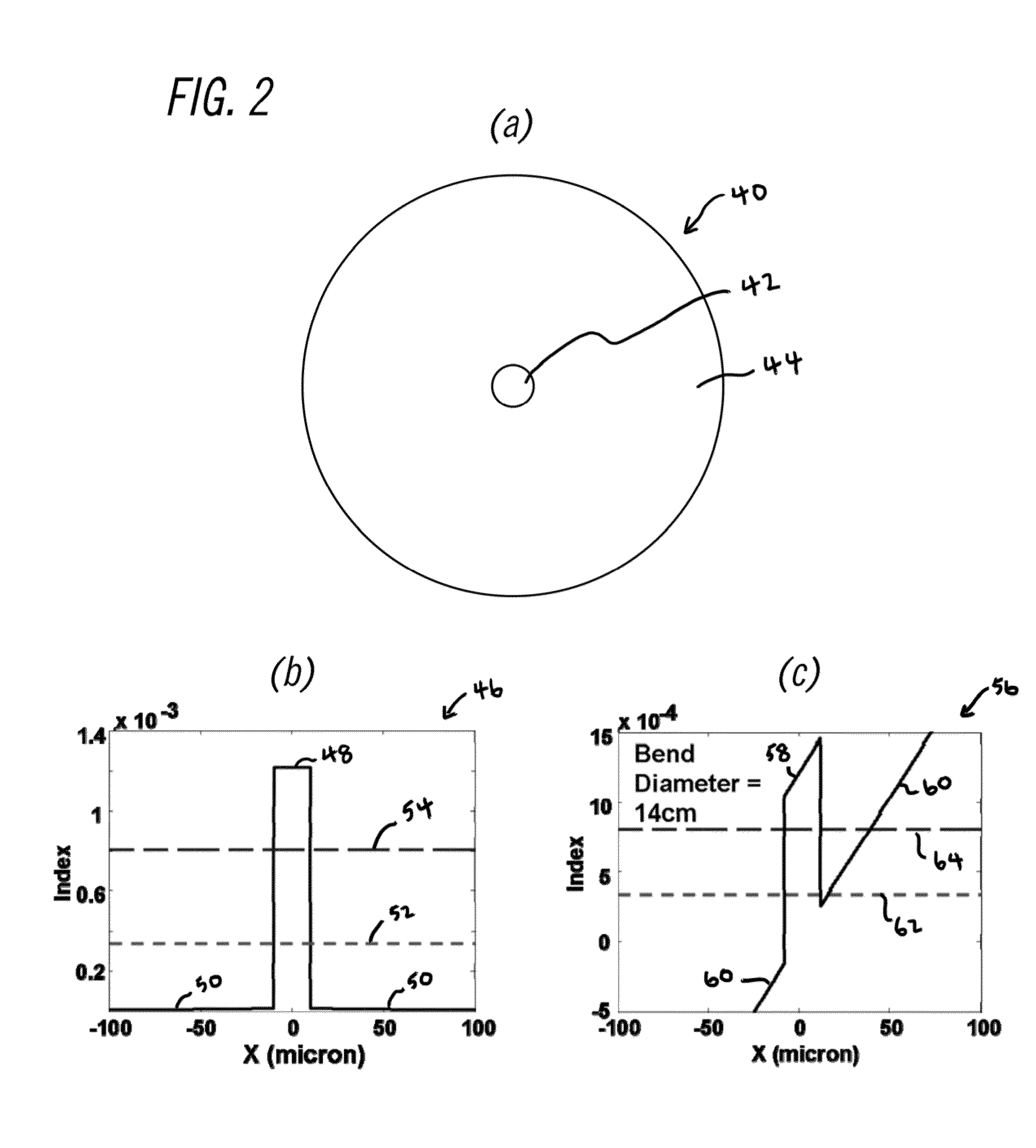Systems and techniques for compensation for the thermo-optic effect in active optical fibers
a technology of active optical fibers and compensating systems, applied in the field of fiber optical technology, can solve problems such as the degradation of the ambient temperature loss characteristics of fibers, and achieve the effect of preventing the degradation of the single-modedness of a large-mode-area fiber and preventing the degradation of the bandpass characteristics of an optical fiber filter
- Summary
- Abstract
- Description
- Claims
- Application Information
AI Technical Summary
Benefits of technology
Problems solved by technology
Method used
Image
Examples
Embodiment Construction
[0028]An aspect of the invention provides optical fiber layouts that compensate for the thermo-optic effect in optical fibers. According to a practice of the invention, thermo-optic compensation is provided for an optical fiber by arranging the fiber according to a scheme comprising specific length-varying curvatures. In one example, described below, the length-varying curvature is configured to provide first-order compensation for the index gradient created by the thermo-optic effect at each given fiber length. Equivalently, the length-varying curvature is configured to provide a reasonable level of compensation for the level of HOM loss or wavelength-selective loss at each given fiber length.
[0029]It is noted that fiber layouts according to the present invention can take a number of different shapes (e.g., circular, elliptical, figure eight, kidney-shaped, and the like) and forms, including for example: coils, spirals, helixes, serpentine forms, and variations and combinations the...
PUM
 Login to View More
Login to View More Abstract
Description
Claims
Application Information
 Login to View More
Login to View More - R&D
- Intellectual Property
- Life Sciences
- Materials
- Tech Scout
- Unparalleled Data Quality
- Higher Quality Content
- 60% Fewer Hallucinations
Browse by: Latest US Patents, China's latest patents, Technical Efficacy Thesaurus, Application Domain, Technology Topic, Popular Technical Reports.
© 2025 PatSnap. All rights reserved.Legal|Privacy policy|Modern Slavery Act Transparency Statement|Sitemap|About US| Contact US: help@patsnap.com



